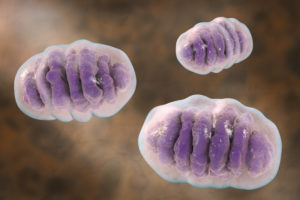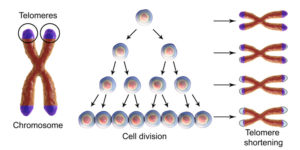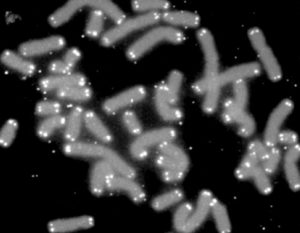Most people accept that getting old is an inevitable part of life. We are born; we grow to become fertile adults, and then our bodies age until they expire at an average age of 80 for men and 84 for women. As we age, some of the inevitable symptoms include graying and thinning hair, loss of fertility, weakening bones, decreased brain function and losing our ability to hear and focus our eyes. But why does this happen? Why don’t our tissues continue regenerating forever?
The best explanation that I have found comes from an anthropology and evolutionary biology perspective: natural selection becomes weaker as we age. The driving force that repairs our bodies, as we slip into old age, becomes weaker and thus acts less intensely on genes that prolong life and promote repair. The older we get, the less natural selection cares about fighting the accumulation of wear and tear that comes with age. Like it or not, the shadow eventually comes…

What are the main mechanisms by which we age? There are a handful of them.
Let me explain a few of them.
One worrying source of wear and tear arises from the chemical reactions that keep us alive. The oxygen that we breathe every second generates energy in cells but leaves behind by-products, unstable oxygen molecules with free, unpaired electrons. These Reactive Oxygen Species (ROS), adorably also called free radicals, steal electrons from other molecules, thereby “oxidizing” them. This theft sets off a slow chain reaction by creating other unstable, electron-hungry molecules obliged to steal electrons from yet more other molecules. Oxidation burns things gradually and steadily. Just as oxygen causes metal to rust and apple flesh to brown, it damages cell throughout the body by zapping DNA, scarring the walls of arteries, inactivating enzymes and mangling essential proteins.
Another source of aging come from inside the cell, the all-mighty mitochondria (singular: mitochondrion; plural: mitochondria). The phenomenon is called mitochondrial dysfunction. These tiny power plants from inside our cells burn fuel with oxygen to generate energy (ATP). Cells in energy-hungry organs lie the liver, the brain or the muscles can have thousands of mitochondria! Because mitochondria can have their own DNA (they are so important!) they also play a role in regulating cell function and they produce proteins that help protect against diseases like cancer or diabetes. Mitochondria, however, burn oxygen, creating ROS that, unchecked, cause self-inflicted damage. When mitochondria cease to function properly or dwindle in number, they cause aging and illness will ensue.

Mitochondria, a membrane-enclosed cellular organelles, which produce energy
Another self-sabotaging reaction that results from being alive and using energy is browning, more technically called Glycation. Browning occurs when sugar and protein react with the help of the heat. Glycation gives cooked foods like baked bread and roasted meat their dark, aromatic, tasty exteriors, but what’s good for cookies is bad for your kidneys! These reactions can damage tissues and produce compounds called Advanced Glycation End Products, that stiffen blood vessels, wrinkle skin, harden the lenses in our eyes, clog up kidneys and many more. They ultimately trigger inflammation. Over time, the destructive effects of chronic, simmering inflammation accumulate in cells and tissues from head to toe including neurons in the brain, cartilage in joints, the walls of arteries and insulin receptors in muscle and fat cells.
The last thing I want to touch upon here is the phenomenon of shortening of the telomeres.

Telomere shortening is one well-known factor that leads to our cells losing the ability to divide. Our DNA is stored as tightly wrapped strands which form structures called chromosomes. Telomeres are located at the very end of chromosomes, seen as bright dots in the image below, and are made up of DNA that is not used in our genome. When our cells divide, the DNA in the cells must be copied, but the copying mechanism isn’t perfect and it misses some of the DNA on the end. This is where telomeres save the day, as a little bit of telomere gets cut off instead of our important DNA. However, after enough divisions the telomeres may get totally used up, and stop protecting the important DNA. This will eventually make our body more vulnerable to breaking down like cars driven too many kilometers.

Chromosomes (grey) shown with their telomeres (white dots) at the end
But there is hope.
Oxidation can be halted by antioxidants! These are compounds that bind with the reactive oxygen species (ROS) thus rendering them harmless. What are the best food sources of antioxidants? Or what supplements/nutraceuticals can I add to my diet for this? Please call our clinic to book an appointment! and everything will be clarified and explained.
There is natural agents which will wake up dormant mitochondria and restore its proper functionality. If you want to see and follow this Protocol, you need to, again, call our clinic! to schedule a First Visit.
Do you want to know how to fight the Advanced Glycation End Products that wreak havoc in our bodies with natural means? Please call our clinic! to schedule an appointment.
As far as I know, there is only one thing that will fight all of these processes explained above at the same time. It will either slow or sometimes turn back the gradual slide toward poor health, it will prevent or ameliorate bad things that accelerate senescence or aging. If you haven’t guessed by now…I will give you this for free: PHYSICAL EXERCISE!
